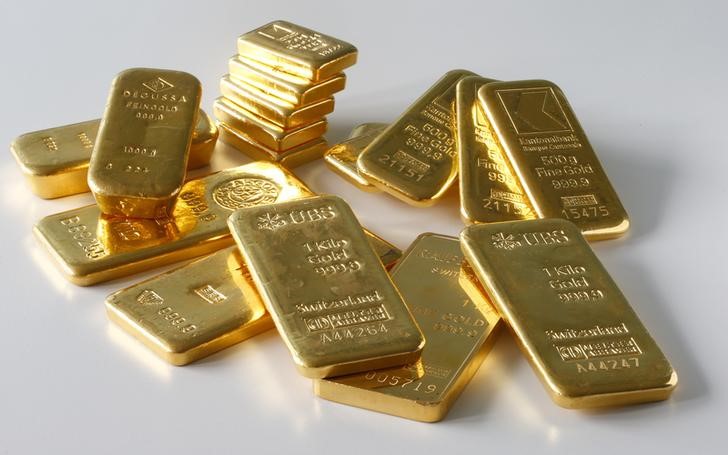Investing.com - Gold prices rallied to a 13-month peak on Friday, as investors scaled back expectations on how fast and how far the Federal Reserve might raise interest rates this year after U.S. employment data showed strong jobs growth combined with low wages.
Gold for April delivery on the Comex division of the New York Mercantile Exchange jumped $16.40, or 0.99%, to close the week at $1,270.70 a troy ounce after hitting an intraday peak of $1,280.70, the most since February 3, 2015.
The U.S. Labor Department reported Friday that the economy added a more-than-expected 242,000 jobs last month, while the unemployment rate held steady at 4.9%. However, average hourly earnings fell 0.1% last month, representing the first monthly decline in wages in more than a year.
The mixed data lessened the threat of an early interest rate hike from the Federal Reserve, boosting the appeal of the precious metal and sending the dollar broadly lower.
The dollar index, which measures the greenback’s strength against a trade-weighted basket of six major currencies, shed 0.37% on Friday to end the session at 97.25, the lowest since February 22.
Dollar weakness usually benefits gold, as it boosts the metal's appeal as an alternative asset and makes dollar-priced commodities cheaper for holders of other currencies.
For the week, gold prices tacked on $51.30, or 4.11%. Prices of the yellow metal are up nearly 18% so far this year as investors seek safe havens in the face of mounting instability in other financial markets.
Also on the Comex, silver futures for March delivery surged 55.0 cents, or 3.63%, on Friday to close at $15.68 a troy ounce. On the week, silver futures soared 94.6 cents, or 6.75%.
Elsewhere in metals trading, copper for May delivery climbed 6.6 cents, or 2.99%, on Friday to end the week at $2.274 a pound. Futures rallied to an intraday peak of $2.304, a level not seen since November 4.
For the week, Comex copper prices skyrocketed 14.9 cents, or 7.22%, the best weekly performance since December 2011.
Prices of the red metal have been well-supported in recent weeks amid mounting expectations for further stimulus measures from central banks in Europe and Asia.
In the week ahead, market players will be focusing on the outcome of Thursday’s European Central Bank meeting amid growing indications the central bank could ramp up its monetary stimulus program and push rates further into negative territory.
Meanwhile, China is to release what will be closely watched trade and inflation data amid ongoing concerns over the health of the world's second biggest economy.
Ahead of the coming week, Investing.com has compiled a list of these and other significant events likely to affect the markets.
Monday, March 7
Federal Reserve Governor Lael Brainard and Vice Chairman Stanley Fischer are due to speak at public events throughout the day.
Tuesday, March 8
China is to report on the trade balance.
Bank of England Governor Mark Carney is due to testify on the U.K.’s European Union membership before the Parliamentary Committee, in London.
Wednesday, March 9
The Bank of Canada is to announce its benchmark interest rate and publish its rate statement.
Later in the day, the Reserve Bank of New Zealand is also slated to announce its rate decision and publish a rate statement.
Thursday, March 10
China is to release data on consumer and producer price inflation.
The European Central Bank is to announce its benchmark interest rate and publish its rate statement, which outlines economic conditions and the factors affecting the monetary policy decision.
The U.S. is to produce weekly data on initial jobless claims.
Friday, March 11
The U.S. is to round up the week with a report on import prices.
